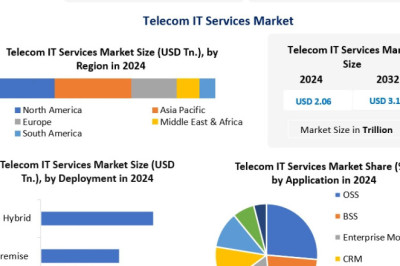views
Forex vs Crypto Trading: Key Differences and Which to Choose
1. Introduction
Forex (foreign exchange) and cryptocurrency trading are two of the most popular markets for traders worldwide. Both offer opportunities for profit, but they operate in distinct ways with different risks and rewards. While Forex trading involves currency pairs like EUR/USD, crypto trading focuses on digital assets like Bitcoin and Ethereum.
For beginners and intermediate traders, choosing between these markets can be challenging without understanding their differences. This article will explore how Forex and crypto trading compare in terms of market structure, liquidity, volatility, fees, and risk. By the end, you’ll have a clearer idea of which trading style suits your goals and risk tolerance.

2. Understanding Forex and Crypto Trading
2.1 What is Forex Trading?
Forex trading, short for “foreign exchange,” involves the buying and selling of currencies. Traders speculate on the exchange rate between two currencies, such as the EUR/USD pair (Euro vs. US Dollar).
-
Market Size: Forex is the largest financial market globally, with over $6.6 trillion traded daily.
-
Participants: Banks, hedge funds, corporations, and retail traders.
-
Trading Hours: 24 hours a day, 5 days a week (Monday to Friday).
Example: A trader buys EUR/USD at 1.1000 and sells at 1.1050, earning a profit from the exchange rate increase.
2.2 What is Cryptocurrency Trading?
Cryptocurrency trading involves digital assets like Bitcoin (BTC), Ethereum (ETH), Chainlink (LINK) and other altcoins. Unlike Forex, the crypto market operates on decentralized networks powered by blockchain technology.
-
Market Size: The global crypto market cap exceeds $2 trillion.
-
Participants: Retail investors, institutional investors, and decentralized autonomous organizations (DAOs).
-
Trading Hours: 24 hours a day, 7 days a week (continuous trading).
Example: A trader buys LINKUSDT at $15 and sells at $20, making a profit from the price increase.
3. Key Differences Between Forex and Crypto Trading
3.1 Market Structure and Trading Hours
-
Forex Market: Operates through centralized exchanges and banks. Trading follows the financial centers’ schedule—New York, London, Tokyo, and Sydney—and is closed on weekends.
-
Crypto Market: Decentralized and operates on blockchain technology. Trading is continuous, even on holidays and weekends.
Key Takeaway: The crypto market’s 24/7 accessibility offers flexibility, while the Forex market provides structure through defined trading sessions.
3.2 Liquidity and Volatility
-
Liquidity:
-
Forex: Highly liquid, especially for major currency pairs like EUR/USD, ensuring quick order execution.
-
Crypto: Less liquid than Forex, but top coins like Bitcoin have improved liquidity over time.
-
Volatility:
-
Forex: Typically lower volatility, making it easier to predict price movements.
-
Crypto: Extremely volatile, with prices capable of rising or falling by double digits in a single day.
Example of Volatility: Bitcoin surged from $30,000 to $60,000 in 2021, whereas the EUR/USD pair rarely moves more than 2% in a day.
3.3 Regulation and Security
-
Forex Regulation: Strictly regulated by financial authorities like the U.S. Commodity Futures Trading Commission (CFTC) and the Financial Conduct Authority (FCA) in the UK.
-
Crypto Regulation: Less consistent, varying from country to country. Some exchanges are regulated, but others operate without oversight, increasing risk.
Security Risks in Crypto: Crypto exchanges can be hacked, as seen in the Mt. Gox hack, where $460 million worth of Bitcoin was stolen.
3.4 Trading Costs and Fees
-
Forex: Typically low spreads, especially for major pairs, with brokers earning through spreads or commissions.
-
Crypto: Higher fees depending on the exchange, including maker/taker fees and blockchain network fees.
Example of Fees: A Forex broker may charge a 0.1% spread on EUR/USD, while a crypto exchange could charge a 0.5% transaction fee plus blockchain gas fees.
3.5 Technology and Accessibility
-
Forex Platforms: Commonly traded using platforms like MetaTrader 4 (MT4) and MetaTrader 5 (MT5) with advanced charting tools.
-
Crypto Platforms: Traded on exchanges like Binance, Coinbase, and OKX, with options for spot, futures, and staking.
Ease of Entry: Crypto is more accessible to beginners due to mobile-friendly apps, while Forex platforms may have a steeper learning curve.
4. Pros and Cons of Forex vs. Crypto Trading
4.1 Advantages of Forex Trading:
-
✅ High Liquidity: Faster trade execution and minimal price slippage.
-
✅ Lower Volatility: More predictable price movements.
-
✅ Strong Regulation: Better protection for traders.
-
✅ Leverage Options: Brokers often provide leverage up to 50:1, amplifying profits (and losses).
4.2 Disadvantages of Forex Trading:
-
❌ Limited Trading Hours: Closed on weekends.
-
❌ Complex Influences: Prices are heavily influenced by geopolitical events and central bank policies.
-
❌ Lower Profit Potential: Less volatile than crypto, limiting short-term gains.
4.3 Advantages of Cryptocurrency Trading:
-
✅ 24/7 Trading: No downtime, allowing you to trade anytime.
-
✅ High Profit Potential: Significant price swings can lead to large profits.
-
✅ Decentralized Market: Less control by governments and institutions.
-
✅ New Trading Opportunities: Includes staking, yield farming, and NFTs.
4.4 Disadvantages of Cryptocurrency Trading:
-
❌ High Volatility: Can cause sudden and large losses.
-
❌ Security Risks: Vulnerability to hacks, scams, and phishing attacks.
-
❌ Regulatory Uncertainty: Risk of sudden changes in laws or exchange bans.











